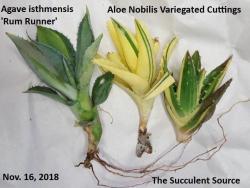@Stush2019 Now I have just about heard it all! That one takes the cake, in my book.

I would think the Lime, is rather a bit harsh....Though, what I have done in the past, was to extremely carefully splitting a pistil, to shorten the distance a pollen grain needs, for a tubule to reach it, to obtain fertilization. Because, a long tubule flowering plant, ( or cactus/succulent) doesn't work well, if the pollen donor comes from a much shorter growing tubule .Conversely, the shorter one, should be easier, to accept pollen on the mature stigma, from the longer pistil, of the pollen parent. As the tubule doesn't have to grow as long as ordinarily would,, to create fertilization, at the ovary.
I recall, pollinating a Turbinicarpus alonsoi, with a Pelcyphora ( can't remember, if aselliformis, but likely strobiliformis or Strombocactus esperanza.. The T. alonsoi produced a huge amount of seeds. Germination was very good, & some were green & others red- (about 50/50) but a slug had a nice midnight munchies fest & so I never did get past, the noticeable seedling color difference. Much like the best ''Onzuka' are red seedlings ^ the green, ones disposed of, as they are supposedly just rather normal looking....Forced, self pollination, or inter (intra?) specific can cause color mutation, more naturally, even if it is an "un-natural" plant results.
hth Shawn
